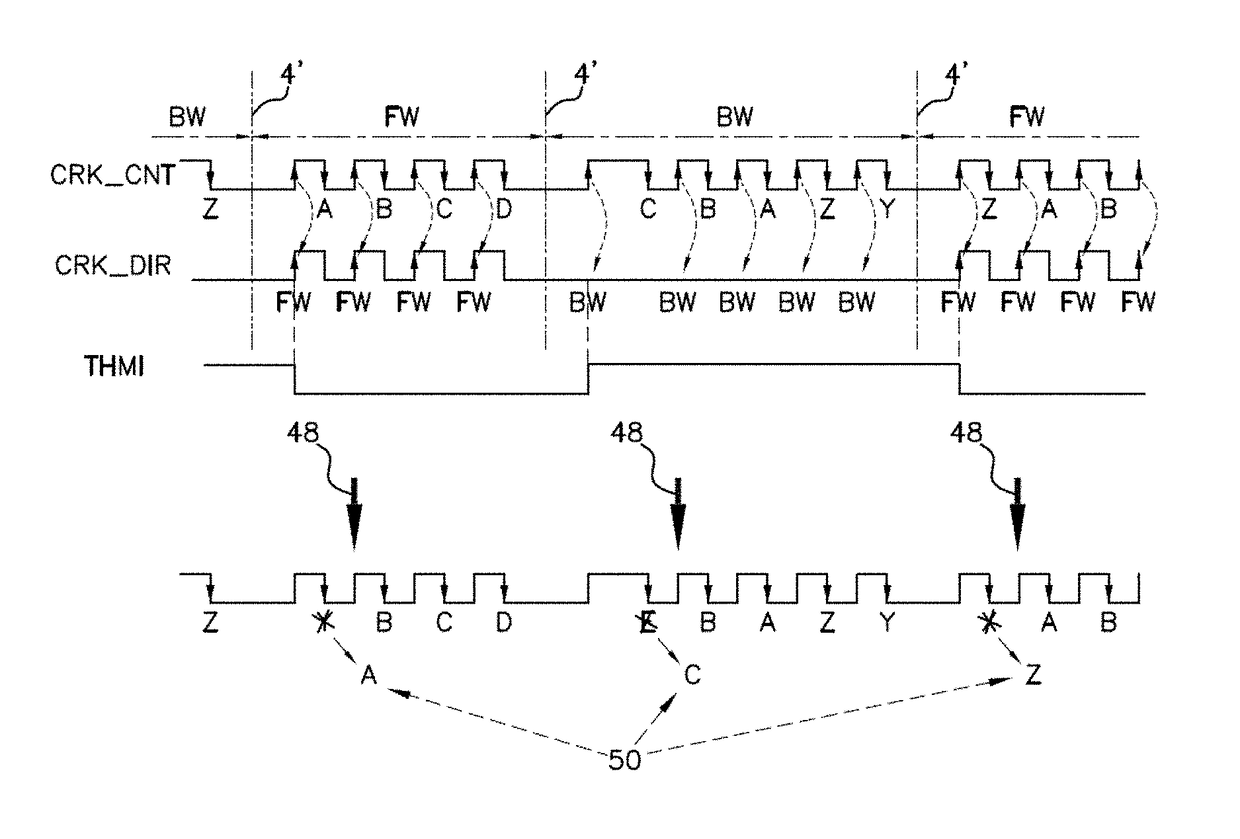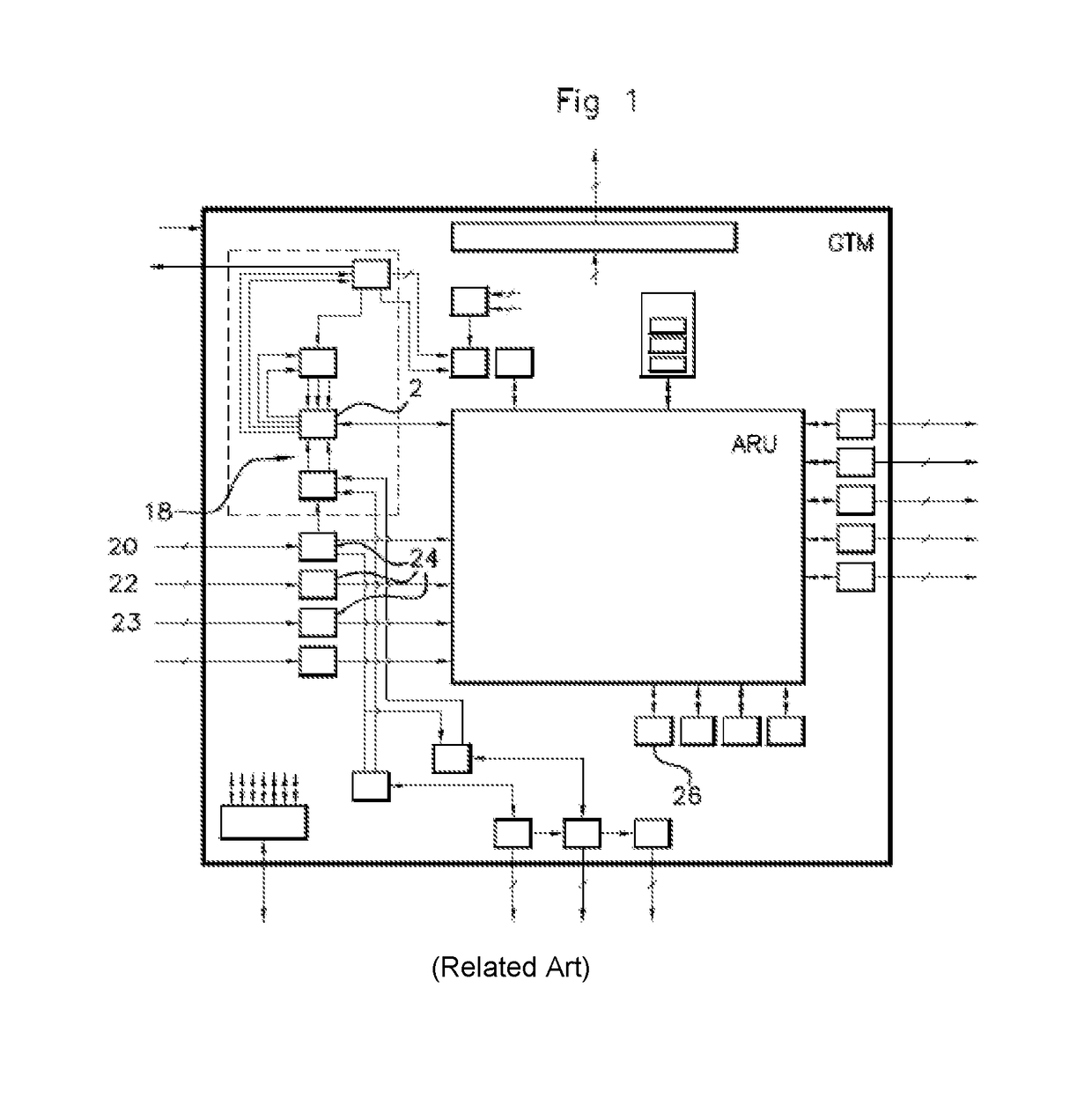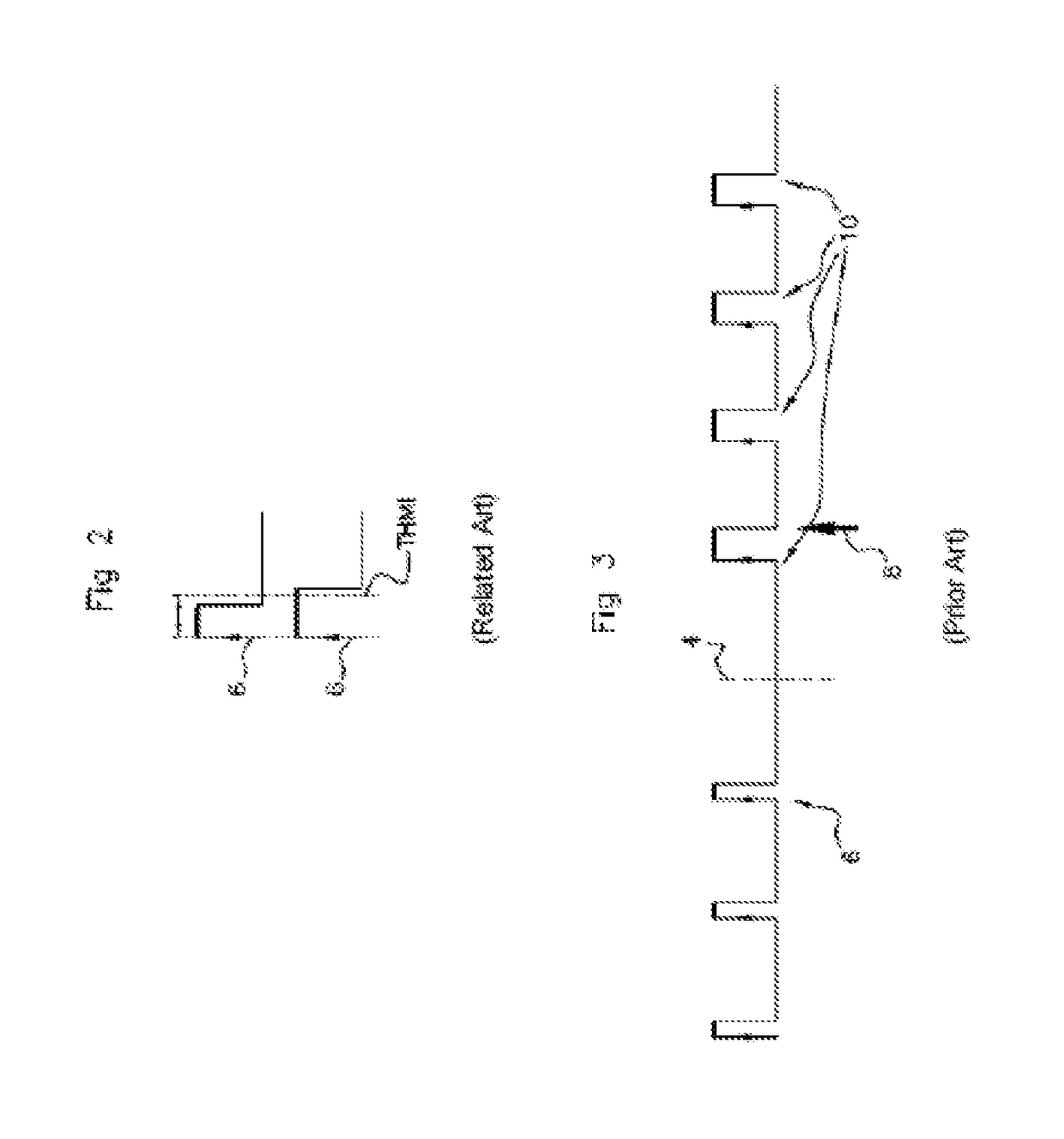Method for processing a signal supplied by a bi-directional sensor and corresponding device
a bi-directional sensor and signal processing technology, applied in the direction of speed sensing governors, multiple input and output pulse circuits, electrical control, etc., can solve the problem of limited modification to be afforded at the level of corresponding electronic devices, and achieve the effect of reliable determination of the angular position of the corresponding engin
- Summary
- Abstract
- Description
- Claims
- Application Information
AI Technical Summary
Benefits of technology
Problems solved by technology
Method used
Image
Examples
Embodiment Construction
[0036]FIG. 1 illustrates a generic timer module, subsequently called GTM. Such a module can be used within an internal combustion engine electronic management system. Inside this module is a first component 2 charged with managing the synchronization of the position of the corresponding engine as well as with generating an angular clock. This first component 2 is for example a digital phase locked loop, also called DPLL.
[0037]The first component 2 is known from the prior art. It generally receives two signals originating from sensors (not represented) embedded in the corresponding engine. A first signal originates from a sensor associated with a toothed target fastened to the crankshaft of the engine. Such a target generally comprises thirty-six or sixty teeth (without taking account of one or two missing teeth making it possible to introduce a discontinuity defining an origin point on the target), thereby yielding a precise signal to define the position of said crankshaft. The seco...
PUM
 Login to View More
Login to View More Abstract
Description
Claims
Application Information
 Login to View More
Login to View More - R&D
- Intellectual Property
- Life Sciences
- Materials
- Tech Scout
- Unparalleled Data Quality
- Higher Quality Content
- 60% Fewer Hallucinations
Browse by: Latest US Patents, China's latest patents, Technical Efficacy Thesaurus, Application Domain, Technology Topic, Popular Technical Reports.
© 2025 PatSnap. All rights reserved.Legal|Privacy policy|Modern Slavery Act Transparency Statement|Sitemap|About US| Contact US: help@patsnap.com



